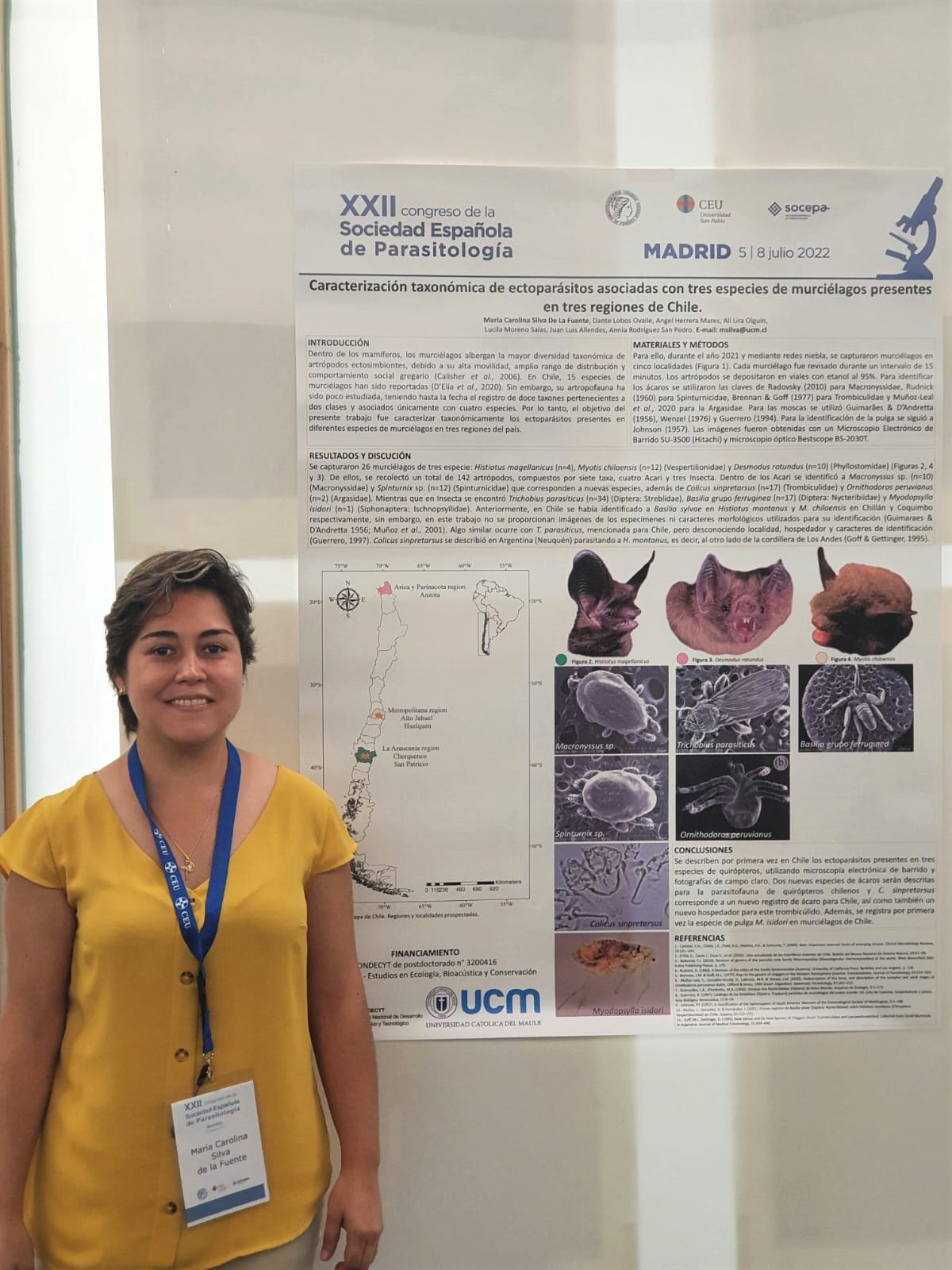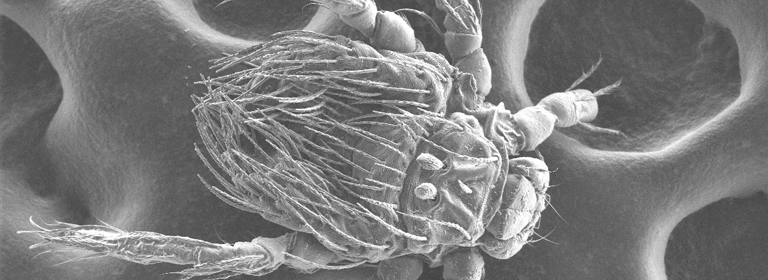The PhD in Veterinary Sciences and expert in Zoology, Carolina Silva, reported the results of her research on the commonly named “scrub typhus», to the Spanish Society of Parasitology.
 The most recent scientific findings regarding the commonly named «scrub typhus» was presented by the researcher from the Universidad Católica del Maule (UCM for its acronym in Spanish), Carolina Silva, before the XXII Congress of the Spanish Society of Parasitology (SOCEPA), held in Madrid.
The most recent scientific findings regarding the commonly named «scrub typhus» was presented by the researcher from the Universidad Católica del Maule (UCM for its acronym in Spanish), Carolina Silva, before the XXII Congress of the Spanish Society of Parasitology (SOCEPA), held in Madrid.
Silva, academic from the Department of Agricultural and Forestry Sciences of the campus, presented the results of an investigation financed by the National Fund for Scientific and Technological Development (FONDECYT, in Spanish), to experts from about thirty countries.
The PhD in Veterinary Sciences said, «I was able to show the prevalence of Scrub Typhus in three locations in Chile and in particular of the Orientia bacterium, which produces this disease». She focused her research on Chiloé and Cochamol, in Los Lagos Region, in addition to Caleta Tortel in Aysén and explained “the places were chosen because there were confirmed clinical cases there”.
Scrub Typhus is an emerging disease in Chile and causes potentially fatal infections. Its typical manifestations are similar to the symptoms of regular typhus: fever, skin rashes, body aches and headaches.
“The vectors are called trombiculid mites, they are very tiny, about a millimeter in size, orange in color, and are present mainly in wild rodents. When people pass through a thicket that has mites, they can reach humans, parasitize and transmit the bacteria. Where the mite bites, a necrotic spot is generated, like the one left by the bite of a corner spider ,” said the scientist.
Chilean variant
Researchers think that the bacterium discovered in Chile could be a variant of the Orientia found in an Asia-Pacific area called the Tsutsugamushi Triangle, which extends from Japan and Russia in the north, to Australia in the south, as well as Pakistan and Afghanistan in the west. Outside of this triangle, only our country has shown similar cases, as of in 2006.
“The bacteria from Chile and Asia Pacific are of the same genus, but different species. Nobody brought it to our country, perhaps it was always here and had not been discovered,” said Silva, who examined vectors from the molecular point of view during a recent internship at t
The diagnoses of «Orientia Chilensis», the name intended to be coined to identify the eighty cases detected so far in national territory, are of mandatory notification to the Public Health Institute (IPS). Without treatment, which is usually based on the administration of antibiotics, mortality reaches 6%.













